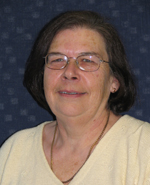
School of Molecular and Microbial Biosciences
The University of Sydney
Ruth Hall has made a substantial and highly influential contribution to our understanding of how antibiotic resistance genes are acquired by gram negative bacteria. This is important because antibiotic resistance develops by resistance genes coming into a pathogen from elsewhere. She discovered and characterised experimentally one of the central mechanisms of gene movement found in bacteria and is continuing to work on novel antibiotic transfer systems. More broadly, her work has made a seminal contribution to our understanding of how genes of all types are mobilised by bacteria and hence how bacterial genomes evolve.
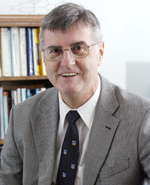
Professor of Chemistry (Organic Chemistry) and University Professorial Fellow
University of Sydney
Professor Maxwell Crossley is a world leader in research on porphyrins, a class of compounds of great importance to life and for which many new uses are emerging in nanosciences. Haem, the red coloured oxygen carrier in blood, and chlorophylls, green pigments responsible for photosynthesis in plants, are important porphyrins. Professor Crossley designs and constructs new functional porphyrin systems for use in solar energy devices, in mimicry of photosynthesis and also in the burgeoning field of molecular-scale electronics. He has been responsible for many seminal advances in the field.
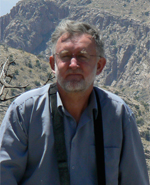
Research School of Earth Sciences
Australian National University
Professor Gordon Lister examines tectonic processes that lead to the building and destruction of mountain belts. His PhD involved modelling and simulation using the primitive computers of the day, and led to the first of many software packages that have stemmed from his research. He taught for a decade in Leiden and Utrecht in the Netherlands, where he developed an ongoing fascination for the evolution of the Alpine-Himalayan orogen. This mountain belt once stretched from Spain to New Zealand, but has now been largely destroyed by the processes of lithospheric extension. His return to Australia enabled a renewed interest in ancient mountain belts, and comparison with modern orogens. Professor Lister was one of the first to demonstrate the importance of extensional tectonics in orgenic processes. His research has greatly influenced this field.
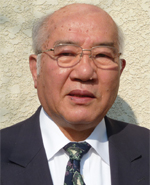
Scientific Advisor (Formerly Director)
Geological Survey of Japan
Shunso Ishihara is famous for his recognition in 1971 of the magnetite- and ilmenite-series of granitic rocks, which he first recognised in Japan and has since applied to many granites elsewhere. He was the first to recognise that the degree of oxidation of a granite magma may be related to geographic location, with important implications for the type of associated mineralisation that may be found. His recognition of "oxidised" and "reduced" granites has been fundamental to developing an understanding of the relationship between the oxygen fugacity of both magmas and the magmatic volatile phase, and mineralisation. The recognition of the association of Sn, W, Mo and Cu mineralisation with granites of different oxidation states by Ishihara predated experimental studies that have demonstrated the dependence of the behaviour of those elements on oxygen fugacity. The magnetite-ilmentite scheme remains the basic scheme for the metallogenic classification of granites to this day.
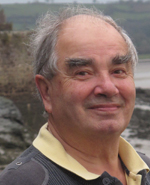
Honorary Professor
School of Geosciences
The University of the Witwatersrand
Professor Anthony Naldrett was nominated for the Haddon King award because of his major life-time contribution to the understanding of orthomagmatic Ni-Cu-PGE sulfide deposits of all types. Tony Naldretts book on the geology of these deposits (now in second edition) is the primary reference for all who study and explore for this type of deposit. He has played a key role in the elucidation of almost all the fundamental geological processes associated with this type of deposit and his work is the primary reason that this type of deposit is relatively well understood. He has published on all major examples of this deposit type. Notably, he was the first western researcher to obtain access to the giant Noril'sk and Jinchuan deposits in Russia and China.
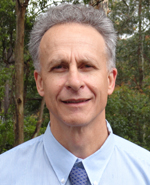
Director, Centre for Advanced Particle Processing and Transport
University of Newcastle
Professor Galvin is the inventor of a new technology, the Reflux Classifier, which is having very significant industrial impact in gravity separation, beneficiating fine coal and dense minerals. The Reflux Classifier consists of a novel fluidized bed incorporating a system of parallel inclined channels. With closely spaced inclined channels, shear induced inertial lift conveys the relatively low density particles with the fluid flow, while the denser particles sediment, sliding down the inclined surfaces.
Professor Galvin developed a major R&D collaboration with Ludowici Australia over a 10 year period, producing a definitive description of the complex physical processes involved in the separations, and basis for applying the technology in the design of a broad range of applications. He is the Director of the Centre for Advanced Particle Processing and Transport and is well known in both the academic and industrial worlds for his outstanding contributions to his field, gravity separation.

ARC Australian Professorial Fellow and Winthrop Professor
ARC Centre of Excellence in Plant Energy Biology
School of Biomedical, Biomolecular and Chemical Science
University of Western Australia
Professor Harvey Millar’s research focuses on energy production in plants and how the process of respiration is affected by harsh climates. His work has shown how respiration can be protected in plant cells during environmental stress, how production of the antioxidant vitamin C is controlled in plants, and how the complex links between respiration and plant growth can alter plant yields. His discoveries underpin our understanding of respiratory damage in cell ageing and disease, relevant to both plants and animals.

Genetic Epidemiology
Queensland Institute of Medical Research
Dr Manuel Ferreira established the Australian Asthma Genetics Consortium, which recently carried out the largest asthma genetics study in Australia. This study, published in The Lancet, identified a gene – the interleukin-6 receptor – that has a more active version and a less active version. The more active version is more commonly found in asthmatics and contributes to inflammation. These findings suggest that a drug that reduces the activity of this gene – currently used to treat rheumatoid arthritis – may be effective in asthma.
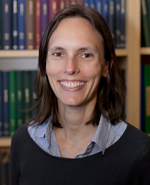
Centre for Vascular Research
University of New South Wales
Associate Professor Katharina Gaus is a leader in the field of cellular immunology and molecular microscopy. The main aim of her research has been to gain a mechanistic understanding of the organisation of the plasma membrane within cells. She has pioneered fluorescence microscopy approaches to examine and quantify T-cell signalling on a single molecule level (super-resolution microscopy) in living cells. Her research has provided the first evidence for lipids being linked to T-cell activation on a molecular and functional level, and may explain why immune function is compromised in obese people.
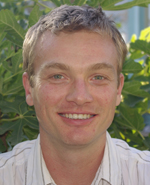
School of Earth Sciences
University of Melbourne
Dr Todd Lane is an atmospheric scientist at the University of Melbourne. Using state-of-the-art computer models he examines processes such as thunderstorms, airflow over mountains, heavy precipitation events, and bushfire weather. He has also conducted extensive research on turbulence near thunderstorms and the hazards they pose to commercial aircraft, and is currently working on improving methods for turbulence avoidance. He is currently supported by an Australian Research Council Future Fellowship.
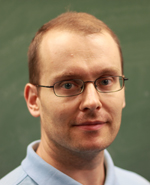
ARC Queen Elizabeth II Fellow
School of Mathematics and Statistics
University of New South Wales
Dr Josef Dick is an outstanding young researcher who has undertaken pioneering research in the area of numerical analysis. His main research achievements relate to numerical integration and, in particular, quasi‐Monte Carlo rules. The importance of Dr Dick’s research derives from his ability to obtain practical constructions of well distributed point sets for use in applications from finance, statistics, physics, geoscience and other areas, as well as through rigorous mathematical convergence bounds using advanced mathematical tools.

Australian Research Council Postdoctoral Fellow
School of Biological, Earth and Environmental Sciences
University of New South Wales
Dr Karen Black is a vertebrate palaeontologist and author of many new fossil species including koalas, possums, marsupial moles, wombat-like diprotodontids and trunked palorchestids. Her internationally acclaimed study of cranial development in a bizarre sun bear like diprotodontid is the first for a fossil marsupial. She spearheads continent-wide research focused on the evolution of Australia’s extraordinary mammals, correlating changes over time with global palaeoclimatic events to provide new evidence-based understanding about current and probable future climate-driven changes in Australian biodiversity.

Senior Lecturer
School of Chemistry
University of New South Wales
Dr Pall Thordarson has made outstanding contributions to molecular devices and materials using supramolecular and bioconjugate chemistry. He uses nanotechnology inspired by or ‘mimicking’ biological systems to create smart gels and bio-devices driven by sunlight. His smart gels, formed by self-assembly, are designed to help anti-cancer drugs kill tumorous cells, reducing the side effects of chemotherapy. His light-driven bio-devices are targeted to the creation of better biosensors for medical applications, as well as combining waste treatment with renewable energy production.

ARC Federation Fellow
Director – Institute for Photonics and Advanced Sensing
Director – Centre of Expertise in Photonics
School of Chemistry and Physics
University of Adelaide
Professor Tanya Monro is a dynamic, creative and productive physicist who has made numerous internationally significant contributions and world firsts in emerging areas of optical physics, most notably in sensing and nonlinear optics. She and her team have discovered new ways of generating, controlling and manipulating light and its interactions with molecules and developing advanced technology for structuring materials on the nanoscale. This research has spanned the development of new theoretical models, the identification of new regimes and fabrication and experimental breakthroughs, and has led to the development of new forms of optical fibres for use in telecommunications, biology, health, food and wine, environmental monitoring and defence.
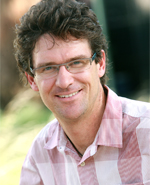
Fellow
Geophysical Fluid Dynamics
Research School of Earth Sciences
Australian National University
Dr Andrew Hogg uses models of ocean circulation to understand the role of oceans in climate. He has discovered new ways in which the ocean can generate low frequency climate variability, and has applied this knowledge to the prediction of the ocean’s response to climate change. He has demonstrated the importance of resolving small-scale circulation features, particularly in the Southern Ocean region, pointing the way forward for the next generation of climate models.
© 2026 Australian Academy of Science